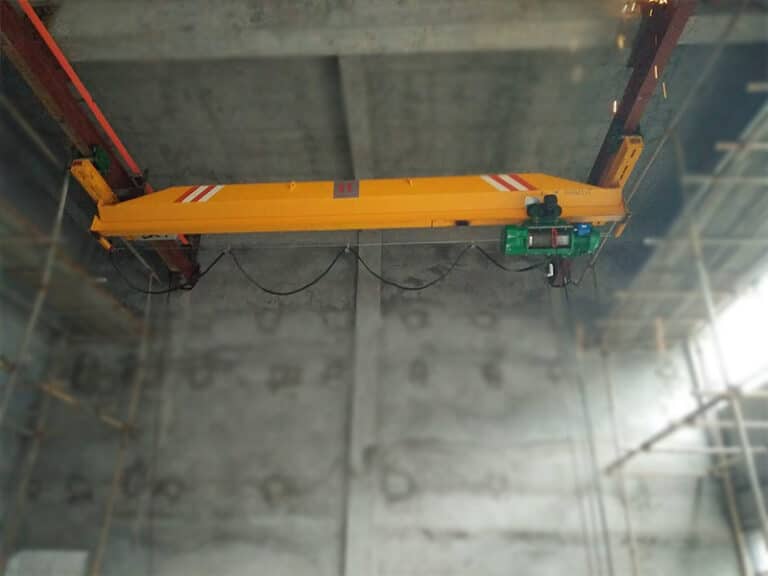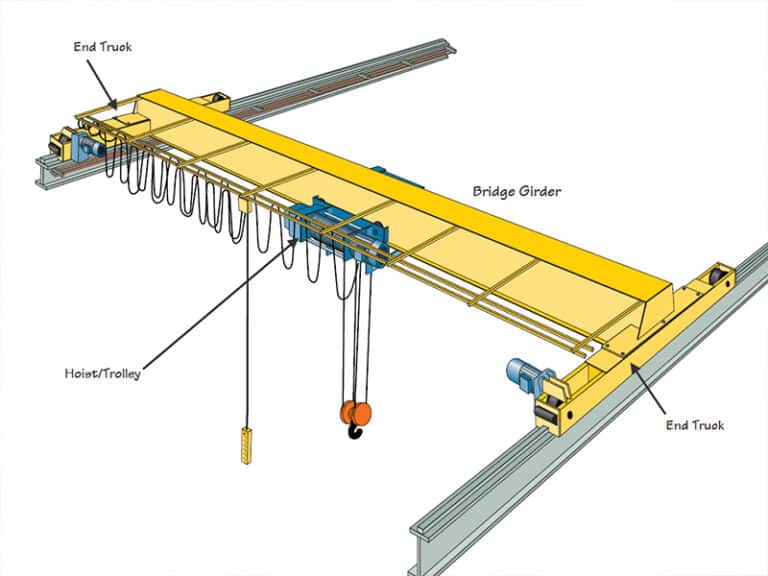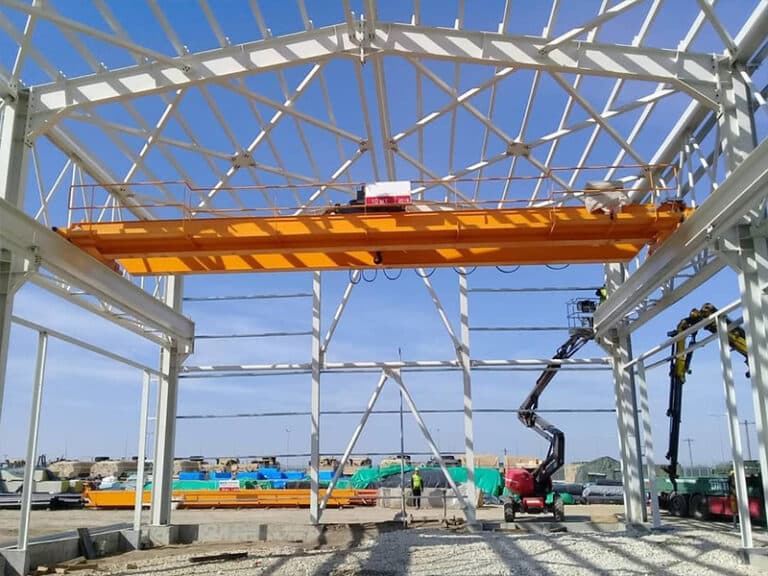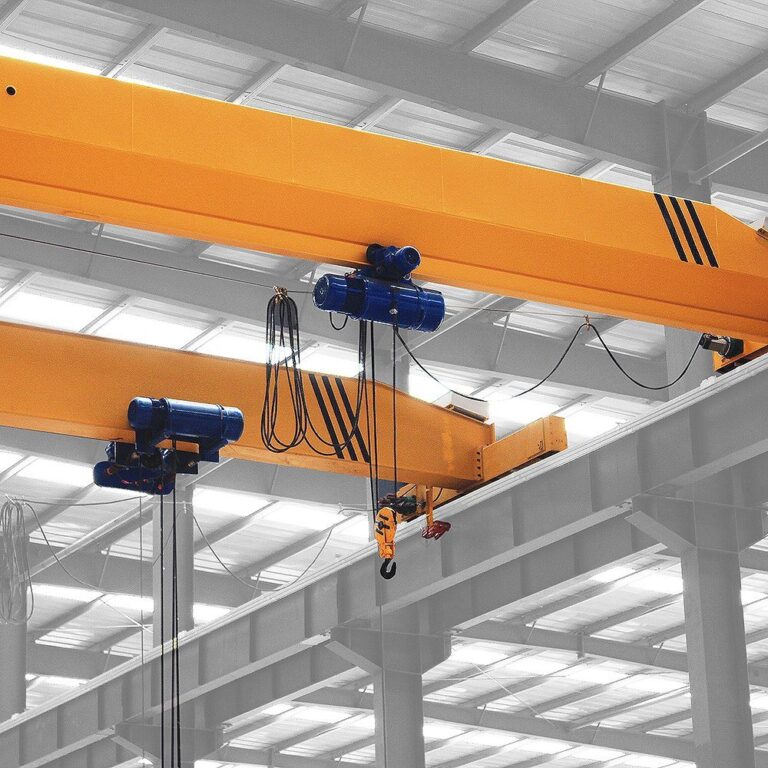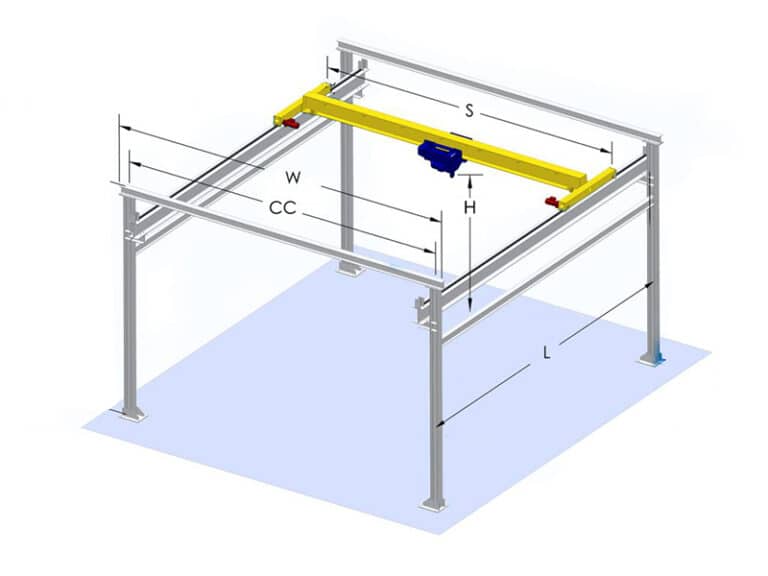There are many classification methods for overhead cranes, the main ones are classification according to lifting capacity, classification according to girder, classification according to hoist type, and classification according to the frequency of use.
With a crane service assortment, you can select and build the most economical and safest designed overhead crane to best suit your lifting application.
Selecting the correct overhead crane duty cycle or service classification helps ensure that overhead crane components are durable enough to withstand the load and usage demands.
Classifications by Lifting Capacity
According to the lifting capacity, overhead cranes can be divided into three types: light, neutral and heavy.
Light overhead crane
Light Overhead Crane – The lifting capacity is relatively small. Overhead cranes with a lifting capacity of 1-10 tons are mainly used in workstations, repair shops, light assembly operations, and light storage.
Medium Overhead Crane
Medium Overhead Crane – Moderate lift capacity. Overhead cranes with a lifting capacity of 10-30 tons are mainly used in machinery factories, production workshops, paper workshops, etc.
Heavy Overhead Crane
Heavy Overhead Crane – Overhead crane with a large lifting capacity, 30-550 tons, mainly used in heavy machinery workshops, foundries, manufacturing plants, steel warehouses, container yards, lumber yards, etc.
Classifications by Girder
According to the beam classification of overhead cranes, there are mainly three types: single girder, double girder, and box girder.
Single girder overhead crane
single girder overhead crane is composed of a beam and is usually used to transport light materials. It can lift materials up to 32 tons. It is the most common overhead crane material handling equipment.
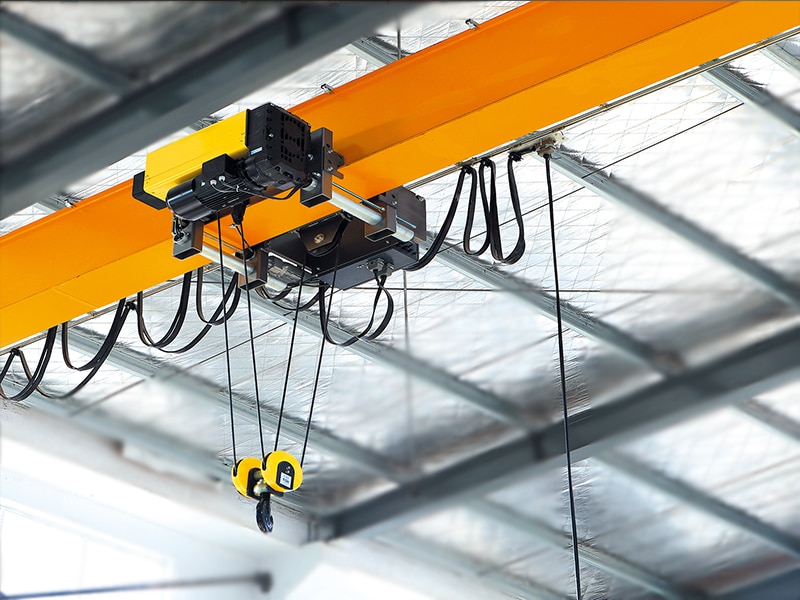
Double girder overhead crane
Double girder overhead crane is composed of two beams and is usually used to handle light materials. It is typically a material handling equipment of 15 tons to 600 tons. It is used in heavy machinery workshops, foundries, manufacturing plants, steel warehouses, container yards, lumber plants The most common overhead crane material handling equipment.

Box girder overhead crane
The advantage of a box girder is that it is lighter on its own, has a greater load-carrying capacity, and is able to span longer bridge distances.
Classifications by Hoist
According to the hoist classification of overhead cranes, it can be divided into three types, namely wire rope hoist, chain hoist, and electric winch.
Wire rope hoist
Wire rope hoist is a common hoisting mechanism for overhead cranes, with a lifting capacity of 1-80 tons, and two different shapes, suitable for single-girder overhead cranes and double-girder overhead cranes.
Mainly electric, manual wire rope hoists are only used in small-capacity situations.
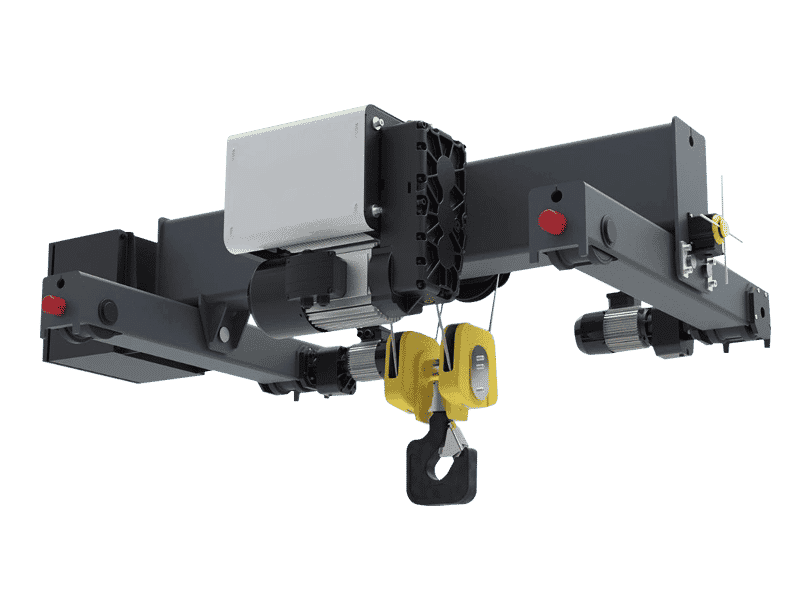
Chain hoist
Chain hoist is the most common type of hoist, it is mainly used in light and small lifting scenarios, with a capacity of 0.5 to 35 tons.
Mainly electric, manual chain hoists are only used in small-capacity situations.

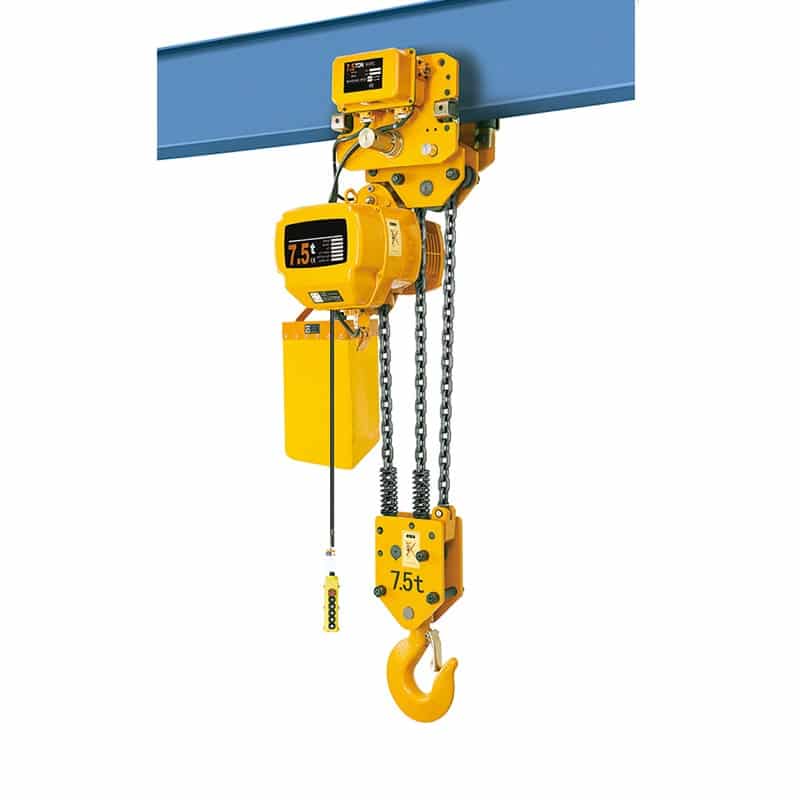
electric winch
The electric winch is suitable for lifting and transporting materials with a large tonnage. The lifting capacity is 2 to 600 tons. It can be placed on an overhead crane to lift and transport materials, and can also be used to drag materials in different directions such as horizontal and oblique angles.
It is mainly electric, and in some cases where electric power cannot be used, diesel power can be used.
Classifications by Frequency of Use
Class A – infrequent or spare
These cranes are best suited for precise handling at low speeds. They are a good choice for power plants, utilities, turbine rooms, motor rooms, and substations.
Class B – Light Service
This class is well suited for environments with light service requirements and low-speed requirements. They can handle two to five lifts per hour and are suitable for repair shops, light assembly operations, service buildings, and light storage.
Class C – Moderate Service
These cranes are designed for machine shops, paper mill computer rooms, and other environments with moderate service requirements. They can handle an average load of 50% of rated capacity and make 5 to 10 lifts per hour with no more than 50% of rated capacity.
Class D – Heavy Service
These cranes can be used in heavy machine shops, foundries, processing plants, steel warehouses, container yards, lumber mills, and more, as well as standard-duty bucket and magnet operations where heavy production is required. In such services, an average of 10 to 20 lifts per hour, averaging 15 feet, does not exceed 65% of rated capacity lifts.
Class E – Severe Service
These cranes are capable of handling loads close to their rated capacity throughout their lifetime. Applications may include magnet, bucket, magnet/bucket combination cranes for scrap yards, cement plants, lumber mills, fertilizer plants, container handling, etc., capable of more than 20 lifts per hour at or near rated capacity.
Class F – Continuous Severe Service
These cranes must be able to continuously handle loads close to their rated capacity under severe operating conditions throughout their entire service life. Applications may include custom-designed specialty cranes that are critical to performing critical work tasks that affect the entire production facility. These cranes must offer the highest reliability, with particular attention paid to ease of maintenance.
Summarize
If you think a little about how often you will use your overhead crane, how difficult it will be to do the work, and the type of environment the crane will be working in, you can get a good idea of which type of crane is best for your business or facility, and which type of crane is the most economical design.
If you underestimate the size of your overhead crane system, the initial investment will be lower, but maintenance and downtime will increase in the long run. If you over-specify your crane, it will result in higher initial costs for the crane and runway system, but less maintenance and downtime in the long run.
Still, have questions about overhead crane classification, or need further advice from an overhead crane expert? Please feel free to contact us to discuss this further!


